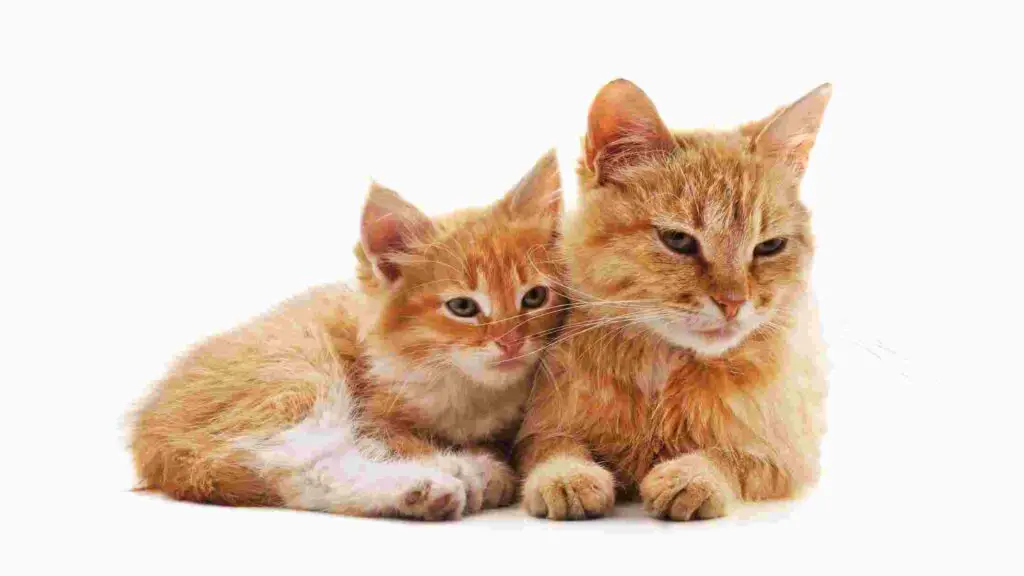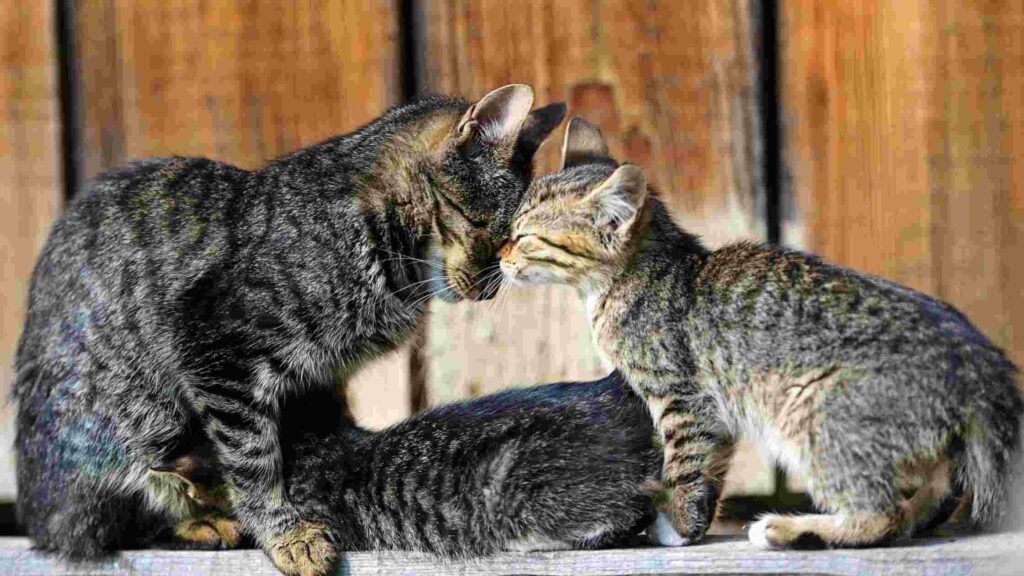As pet parents, we spent a lot of time determining what to feed our cat. But figuring how much to feed a cat is most important. In this article you can know cat feeding guide by age and weight.
How can you ensure that you feed your cat the right food at the right time and in the correct quantities? If you are choosing new cat food, deciding on a feeding schedule, or wondering about supplements or treats, You can check out our feeding guidelines for cats.
Feeding less can lead to nutritional deficiencies and weight loss, but overfeeding is more common. We got from the surveys that approximately 60 percent of cats in the United States are overweight or obese.
Excess body fat puts cats at risk for diabetes, high blood pressure, musculoskeletal problems, skin disease, heart problems, some types of cancer, and a potentially fatal liver disease called hepatic lipidosis.
On the other hand, when you feed your cat an appropriate amount of food considering their age and weight, they can better maintain a healthy body weight which is essential to a cat’s overall health and happiness.
Cat Feeding Guide Chart By Age & Weight
In this feeding guide, you will find out how much to feed for different ages and different weight cats; you will also learn how much wet and dry cat food is good for your felines.
We’ve tried to break down your cat’s dietary needs by age group, giving you a roadmap for good nutrition at each stage of life.
Here is the chart below, which presents the average feeding guide based on a cat’s weight:
| Cat Weight | Typical pet, neutered or spayed | Typical pet, intact | Typical pet, prone to gaining weight | Pet in need of weight loss |
| 5 lbs (2.3 kg) | 157 kcal / day | 183 kcal / day | 131 kcal / day | 105 kcal / day |
| 7.5 lbs (3.4 kg) | 210 kcal / day | 245 kcal / day | 175 kcal / day | 140kcal / day |
| 10 lbs (4.5 kg) | 260 kcal / day | 303 kcal / day | 216 kcal / day | 173 kcal / day |
| 12.5 lbs (5.7 kg) | 298 kcal / day | 362 kcal / day | 258 kcal / day | 207kcal / day |
| 15 lbs (6.8 kg) | 15 lbs (6.8 kg)354 kcal / day | 413 kcal / day | 295 kcal / day | 236 kcal / day |
| 17.5 lbs (7.9 kg) | 396 kcal / day | 462 kcal / day | 330 kcal / day | 264 kcal / day |
| 20 lbs (9.1 kg) | 440 kcal / day | 513 kcal / day | 367 kcal / day | 293 kcal / day |
This list presents a food’s caloric content on the label.
How Much Wet And Dry Cat Food Is Good For Cats?

Once you have determined how many calories your feline needs per day, then you only need to figure out how much food you have to feed your cat to provide those calories. Kittens, adults, and seniors all need a diet based on their life stages.
Knowing what age they fall under, they need wet food or dry food in which quantity we should feed them the correct amount.
Canned Or Wet Cat Food is The Best Option:
Most cats need 4-5 ounces of canned food per day, total. Pate-style varieties are higher in calories per can than those that more resemble people’s food with chunks and gravies- this can be useful when trying to fine-tune the number of calories per day.
If your cat seems extremely hungry and is not gaining weight, it’s acceptable to increase the amount you feed. Many wet foods come in three-ounce cans and recommend feeding approximately one can a day for every three to three and a half pounds of body weight. However, brands vary.
Dry Cat Food is An Affordable Option:
If the cat owner is feeding a good quality dry food with a good quality protein, then the indoor cat needs only approximately 1/3 to 1/2 cup of food each day. Most high-quality foods have about 500 calories per 8 ounces cup of food, and the primary protein source of the food is essential. Cats are obligate carnivores – which means that they have specific nutritional requirements that can only be met by eating animal tissues.
Divide your cat’s caloric needs (kcal/day) by the food’s caloric content (kcal/can or cup).
For example, your cat weighs 10 pounds and is very active, and they are on a diet of Tiny Tiger Pate Chicken Recipe Grain-Free Wet Cat Food. According to the below chart, your cat should consume 346 kcal/day.
Cat Feeding Guide By Age

The age and weight of the cats are the primary factors that affect how much to feed them. We will share the feeding instructions of different generations of cats considering their age and weight. Here is their feeding guide that will help you provide your cat food in the best quantity, as their body needs growth and health.
Less Than One Month Kitten
Newborn kittens often-nurse about every two hours during the first week of life and then gradually decrease to four to six times a day. Daily weight checks are the best way to ensure they are getting all the food they need.
Suppose young kittens do not get enough nutrition from their mothers. In that case, they need to be supplemented or switched with a high-quality feline milk replacement such as PetEgg KMR Kitten Milk Replacer Liquid, according to the directions on the label.
In most cases, you can have about 2 tablespoons of liquid replacer per 4 ounces of their body weight.
3 Months Kittens
When your kitten is over 3 months old, you should add one and a half pouches of wet food to their daily diets of four or five meals. If your kitten is ready for a mixture of wet and dry food, decrease the amount of wet food to between half of a pouch and one pouch (one pouch = 100 grams). Then feed fifteen to twenty grams of kitten food accordingly.
Be aware that your kitten is feeding so much dry food; it can lead to weight gain at this stage.
6 Months Kittens
A six-month-old kitten is growing rapidly and requires more energy from its food. Increase the kitten wet food pouches to two and a half or three times a day and need to reduce the number of meals in a day to four or five.
When you are feeding your kitten a mixed diet at this age, reduce the amount of wet food to two pouches and give fifteen to twenty grams of dry kitten food.
You can also give your kitten treats throughout the day, but the calories from treats should not exceed.
9 Months Kittens
Your kitten’s growth rate will slow down at this age, meaning their nutritional requirements change. The number of meals per day can be reduced to two to four.
You should feed your kitten three pouches of wet kitten food per day or in a mixed diet, only two bags and twenty to twenty-five grams of dry kitten food.
1 Year Cats
Healthy cats grow around 1 pound every month. However, you might notice your cat is not gaining much weight during this age. According to WebMD, the ideal weight of all cats during this age should be 10 pounds.
Which can vary depending on your cat’s breed. For this stage, cats eat two meals per day which are ample for meeting their needs. Though, you should make sure that you are pouring your cat food in a bowl that meets the nutrient requirements of your ball.
You should feed your cat three or three and a half pouches of wet food at this age and give 20 to 25 grams of dry cat food.
3 Year Cats
When to feed your kitten adult food, it only depends when they reach maturity-usually after one year. Feeding kittens many times is a good thought, but when cats mature, you need to feed them the best cat food twice a day. If you continue providing increased calorie food, this may cause obesity or overweight in your cats.
You can feed them 20 calories per pound of body weight at this stage.
7 Year Cats
From this age, our cat will be an adult to a senior cat, and as a result, their ability to digest proteins and fats will decrease. So, it is necessary to feed them 2 servings daily, but that should provide high protein and be easy to digest.
Despite that, we will notify the other changes in our feline, such as the quality of the coat. Generally, however, the recommended daily caloric intake is about 20 calories per pound of body weight.
10 Year Cats
Compared to middle-aged adults, seniors have reduced their protein and therefore tend to lose weight. She needs more calories per pound of her body weight. If your cat appears to be losing weight, consider increasing his calorie intake to 25 calories. You need to feed them 2-3 meals per day.
More Than 12 Years Cats
These senior or elderly cats tend to lose muscle mass and reduce their ability to protein. They need more digestible protein to support lean muscle mass and stay healthy, also more calories per pound of their body weight.
If seniors appear to be losing muscles, you need to feed them 30 to 40 calories per pound(loss of power due to aging).
FAQS(Frequently Asked Questions)
How can you feed the indoor cat?
We suggest hiding different bowls of food around the place where your cat lives to encourage your cat to exercise for their food.
Can we regularly feed dry food to our kitten?
If you regularly feed dry food to your kitten, it will create a habit for it, and maybe once your kitten has grown, it will be difficult for your cat to settle with wet food.
How much food should you feed your cat?
According to the Kirkwood animal hospital, you should feed your cat a mixture of dry and canned food with a percentage of 50 % each.
Does a cat stop eating when its stomach is full?
Yes, most cats stop eating when they eat a complete meal according to their appetite.
Conclusion
Perhaps, the correct food regimen, it’s also essential that they access clean water. Proper hydration helps to prevent constipation and decreases the risk of urinary infection.
Access to freshwater is essential, whether your kitten eats dry or wet food. Finally, consider consulting with your vet for more advice. Even with the knowledge shared in this article, you should consult with your vet for your cat’s individual dietary needs.
Your veterinarian will be able to recommend the ideal diet and dietary regimen for your cat based on your cat’s age, lifestyle, nutritional preferences, and overall health status.